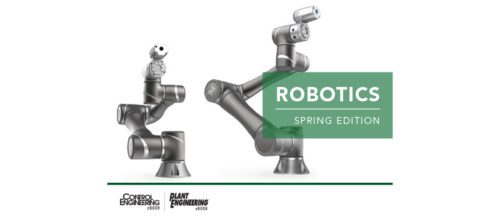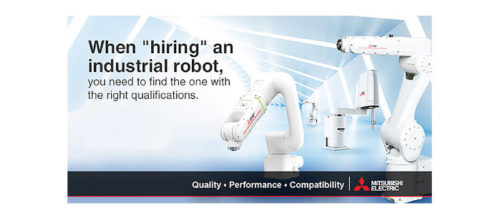Robotics and AI improve factories of the future
Cover Story: Robotics and artificial intelligence (AI) will improve product and service quality, create greater throughput, enhance employee safety, reduce variability, cut waste, and, most increase customer satisfaction.
Deployment of robots, artificial intelligence (AI), and machine learning-based systems could bring many performance benefits for organizations. These benefits include, but are not limited to, improved product/service quality, greater throughput, enhanced employee safety, reduced variability, waste reduction, and, most importantly, higher customer satisfaction.
It is incorrect to regard robotics and factories of the future as new concepts because they have existed for decades; it is the perspective around them has evolved over time. When Henry Ford replaced horse carriages with automotive engines, robotics became the driving force of our lives. His assembly line became the blueprint for later designs of manufacturing plants and factories.
Contrary to science fiction writer Isaac Asimov’s “Three Laws of Robotics,” which largely set the rulebook for human-machine interactions, progress in robotics, AI, and machine learning have brought in a new age of cognitive automation. The machines of today complement human performance in a range of work activities, including ones requiring perceptive capabilities that are in congruence with Ford’s manufacturing breakthroughs. They are providing the groundwork for the factories of tomorrow.
As emerging technologies become more advanced and sophisticated, new knowledge, and portfolios have come into existence at an increasing rate using deep data domain expertise to complement the decision-making process.
AI and machine learning-based systems have become economical, more adjustable, more compliant, and are transforming manufacturing in a variety of ways.
As the technology becomes increasingly straightforward to implement, the business decisions will be augmented by adoption of robotics. However, to capture the full value of these opportunities, organizations will need to take a holistic tactic and bring their automation strategy as close as possible with the current and future needs of the business.
Capturing market potential
According to a research report by Technavio, global robotics market size will grow by more than $32 billion from 2018 through 2022, at a compound annual growth rate (CAGR) of more than 11%. According to another estimate by Statista, the robotics market is projected to be worth almost $500 billion globally by 2025.
The rapid growth of emerging technology, widespread use of wireless applications, surge in the adoption of Internet of Things (IoT), and advancements in AI and machine learning are some factors expected to drive the growth of the global robotics market.
These upcoming technology trends are already renovating business models across every sector and unbolting massive market and innovation opportunities. However, it should be also kept in mind these emerging tools and associated competitive advantages will be impermanent if industry leaders don’t capitalize and adapt to disruptive technology opportunities. For manufacturing organizations to remain competitive and relevant, they must conceive a well thought strategy supported by emerging technologies and robots for their value chain, from beginning to end of production and the supply chain.
New robot capabilities
Even robots are expected to think out-of-the-box rather than follow orders. The rise of machine vision technology juxtaposed with the progress in the IoT domain has given machines the ability to process instructions and images on their own and think about the next steps in the sequence of activities from a logical perspective. This technology enables the robots to “see” and, as they mature, the robots will augment their ability to apply logic to things, and learn on their own.
Collaborative robots is another major development that will continue to flourish in the future as it reflects industry focus towards creating robots that are easier to program, simpler to operate, and can be integrated into processes. With these developments, robots could be placed anywhere on the manufacturing floor and perform any task. With technology advancements such as embedded 3-D vision, multispectral and hyperspectral imaging combined with AI, machine learning, and deep learning, industrial robots will be empowered to improve themselves.
Assembling, using, and maintaining robots have become faster and less costly than before. This is due to exponential increase in computing power, advancements in software-development approaches, and augmentation of networking technologies. Robots are loaded with sensors and actuators that self-monitor and report the status of the robot to the control system, to aid process control and collect data for maintenance, and for continuous improvement and troubleshooting.
Quality is another aspect of manufacturing that has been enhanced through robot-generated data, and advanced analysis techniques. Involvement of robots across manufacturing activities can enable businesses to improve performance, by minimizing errors and enhancing quality while augmenting the production speed, and in some cases achieving outcomes beyond previously imagined human capabilities.
Human talent, new robot challenges
Robots are no longer confined to popular culture; neither are the people who possess the capabilities to conceive and design them. People with the aptitude and skills required to design, operate, and maintain robotic systems are becoming more widely available, and their demand is going to increase. Robotics-related subjects are taught in institutes and universities globally, either through dedicated courses or as part of the regular engineering syllabus. Even organizations have started training employees in emerging technologies to enhance skill sets and empower them to compete with the engineering requirements of tomorrow.
The availability of software that facilitates simulation and maintenance of robotic applications has reduced engineering time and risk. It’s also made the task of programming robots easier and cost-effective.
Robots are transforming all aspects of manufacturing by not going beyond moving materials. Robots powered by AI and machine learning performs a variety of manufacturing tasks and production settings. They can be deployed to do mundane and repetitive tasks and duties that are dangerous or unsuitable for humans.
Manufacturing companies need to be bolder in their transformation plan by going beyond assessing whether a robotics implementation is consistent with other systems. They also need to employ a strategic approach encouraging workforce to embrace robotics more. As automation-related developments continue to impact all aspects of manufacturing, transformation, and organizational productivity will increase as robots become more crucial assets.
Dr. Keshab Panda, is CEO and managing director, L&T Technology Services. Edited by Mark T. Hoske, content manager, Control Engineering, CFE Media, mhoske@cfemedia.com.
KEYWORDS: Robotics, artificial intelligence
Artificial intelligence and robotics will help future factories be more efficient.
Human talent augments robotic implementations
Software makes robots easier to program.
CONSIDER THIS
Does your plant buy equipment or invest in future competitiveness?
Do you have experience and expertise with the topics mentioned in this content? You should consider contributing to our CFE Media editorial team and getting the recognition you and your company deserve. Click here to start this process.




